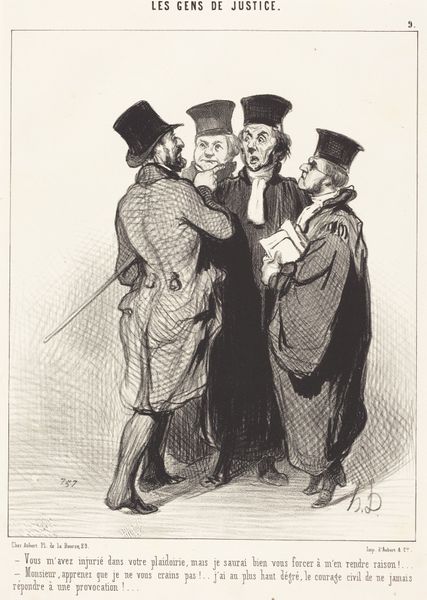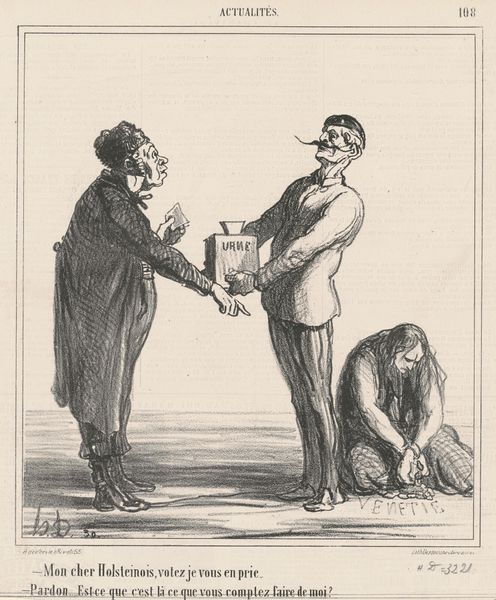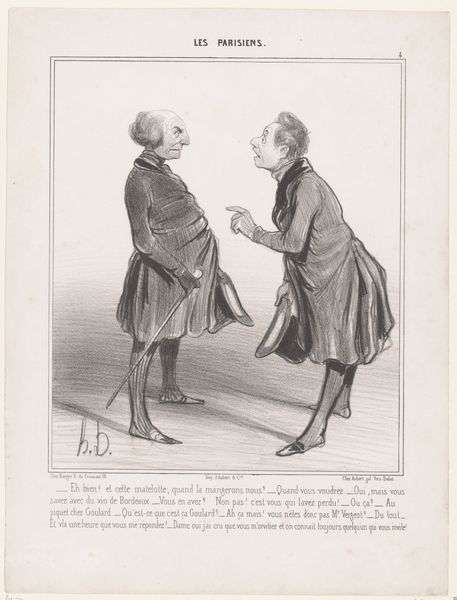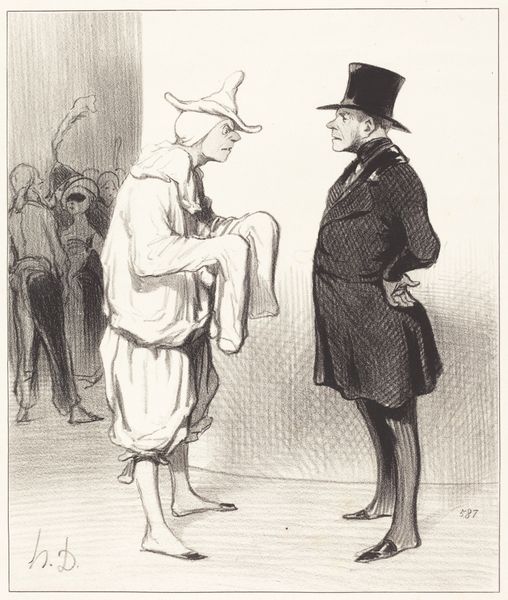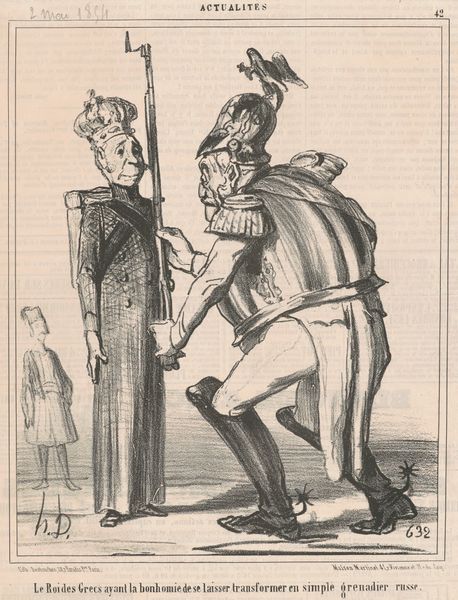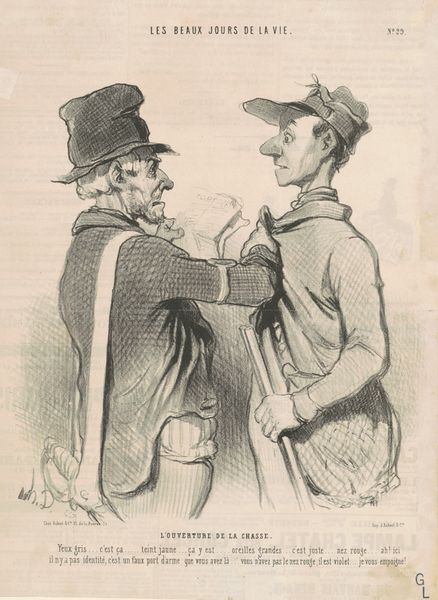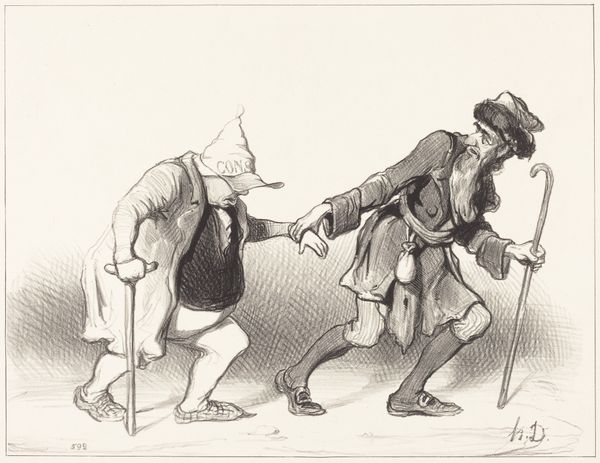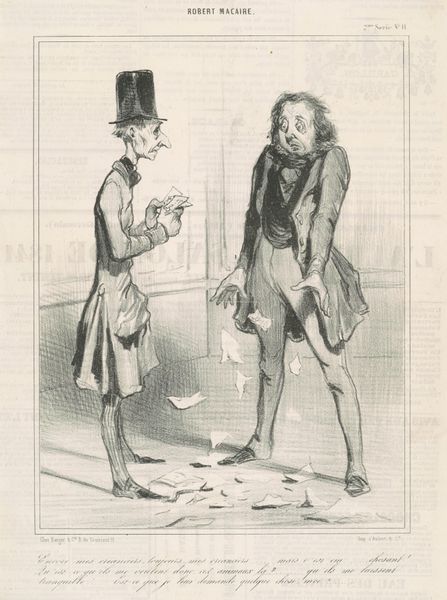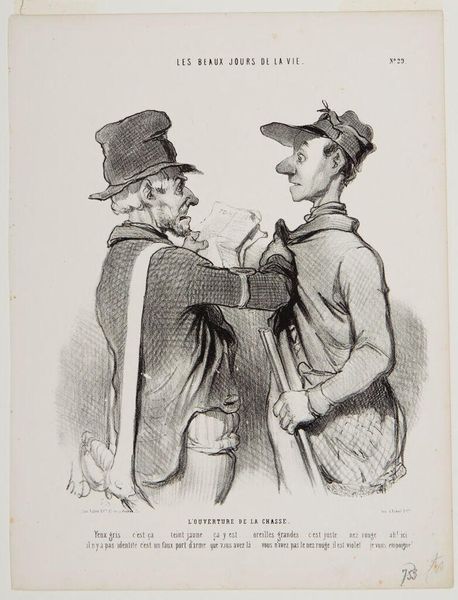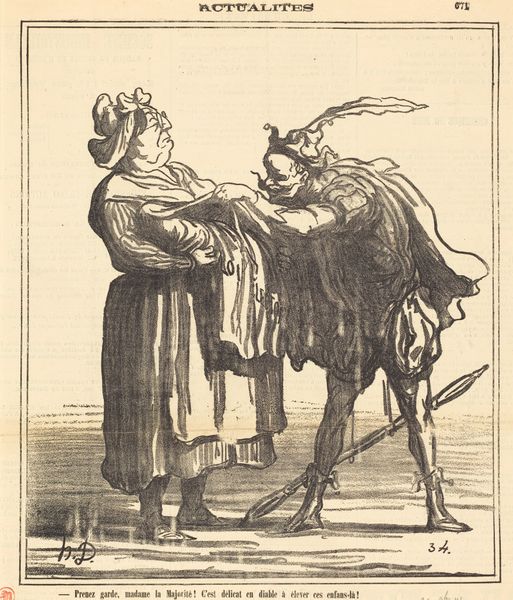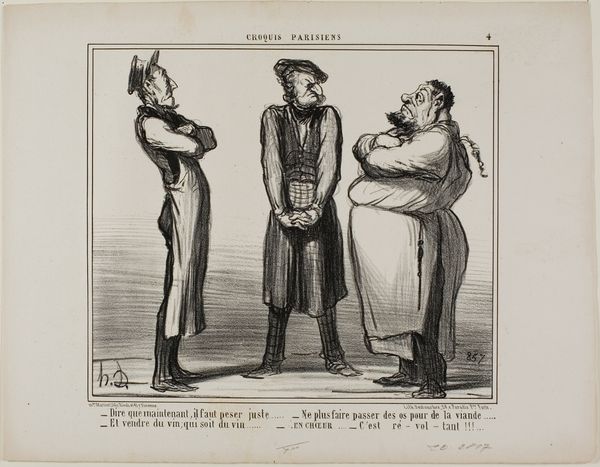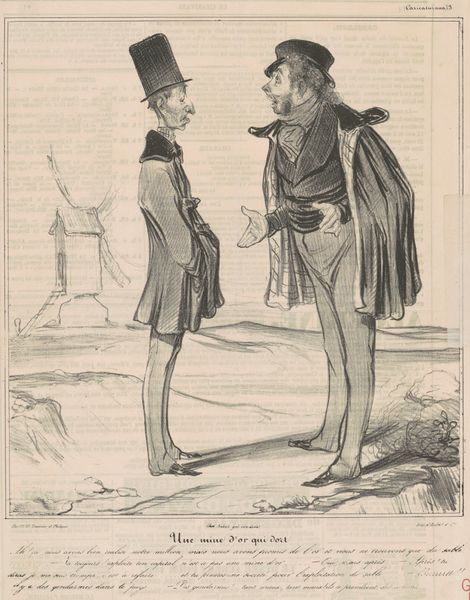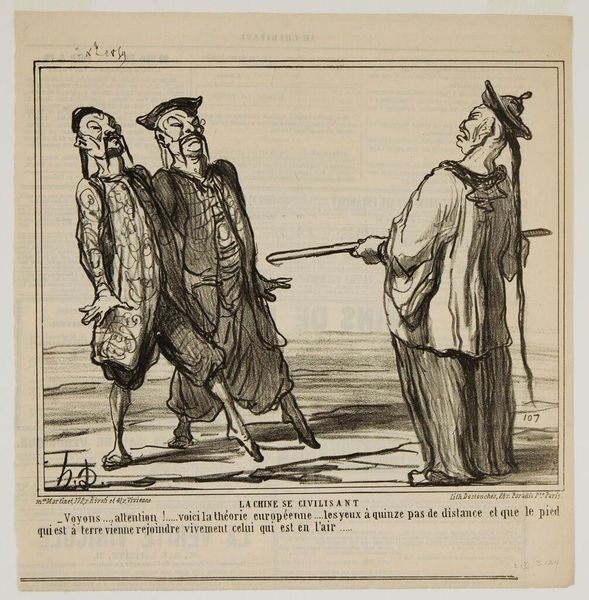
lithograph, print
#
portrait
#
lithograph
# print
#
caricature
#
figuration
#
romanticism
#
portrait drawing
#
realism
Copyright: National Gallery of Art: CC0 1.0
Curator: Honoré Daumier’s lithograph offers an interesting visual commentary, doesn't it? The piece presents a pointed caricature of an alliance, titled "Une Alliance." Editor: The composition immediately strikes me as unsettling. The stark contrast between the figures and their almost grotesque features create a sense of unease, what’s your reading of these characters? Curator: Daumier was quite adept at using his art to critique social structures, particularly the political climate. Here, one can see the critique in how the figures are adorned; the man, carrying books labeled “Scepticism”, is made to wear a dunce cap! It suggests foolishness of intellectual circles. And on the right, the other figure, the implied Catholic Church? What is she turning away from, with her raised arm and averted eyes? Editor: It could be the acknowledgement of a forced partnership. Considering Daumier's romanticist inclination and embrace of Realism as a mode to respond to lived experience, it does point towards some tension between temporal knowledge represented by 'Scepticism', with established religious dogma. It suggests critique, certainly. How do the print and production process factor in this understanding? Curator: The choice of lithography is important here, allowing for the easy reproduction and dissemination of the image to a wide audience, effectively amplifying Daumier's political message to a 19th-century French society ripe with change and industrial advancement. The means of making becomes tied into making statements to wider communities. Editor: Exactly. And if we return to formal elements like line work and shading…note the dramatic play of light and shadow. There’s a strong tonal range and visual rhetoric, underscoring the turmoil that Daumier perceived, what would you say about this formal aspect? Curator: The medium is definitely vital to understanding it. However, consider the context of its creation: Daumier’s involvement in radical politics deeply influenced his works. “Une Alliance” may be a criticism about class power, disguised via the clergy of that period! Editor: That interpretation layers upon our structural analysis effectively, providing yet more dimension. A truly complex piece reflecting the intricacies of societal tension. Curator: It makes one question who really benefited from such supposed allegiances or relationships during Daumier’s epoch, which speaks volumes beyond form, to wider societal tensions of materialist exchange.
Comments
No comments
Be the first to comment and join the conversation on the ultimate creative platform.
